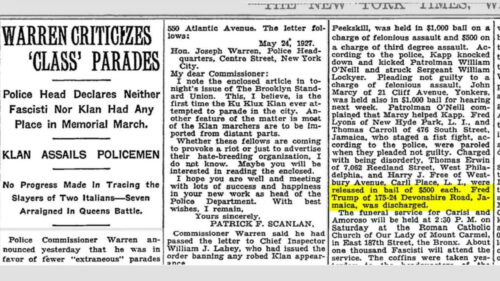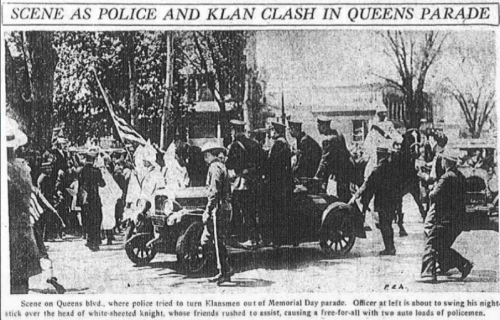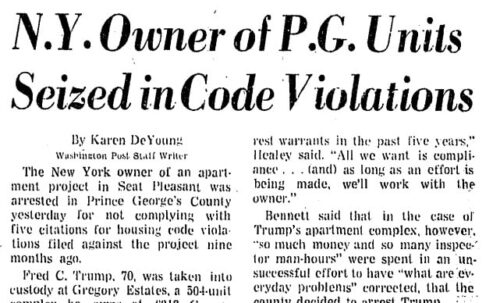The new case in Syracuse involving Westhill High School lacrosse players has exposed something far more troubling than mere illegal “hazing.”
Among the five victims identified by the Onondaga County Sheriff’s Office, one student was taken to a remote area in the county when people appeared from the woods, dressed in black and armed with what appeared to be at least one handgun and at least one knife, Fitzpatrick said.
That group put a pillowcase over that student’s head, then tied him up and threw him in the trunk of a car before he was left in a wooded area in the southern part of the county, the district attorney said.
“He was eventually returned home. There was a period of time where he thought he was going to be abandoned in the middle of nowhere,” Fitzpatrick said. “You can hear that some of the individuals found it amusing,” he said, referencing a videotape of the incident recovered during the investigation.
Make no mistake, these terrorism tactics of hooded capture sending a victim into a remote forested area are very well known by the historians who study “America First”.

The group obviously is drawing from the KKK history of the region. That’s why it is especially alarming to read how a large group organized to bind, hood, and terrorize teenagers using weapons… has adults trying to frame it as a prank, just a misdemeanor crime at most.
We’re witnessing the fruits of a poisoned tree.
What the Syracuse terror group enacted was, in essence, a ritualized kidnapping that mirrors America’s worst historical business practices of human trafficking and torture. A district attorney’s willingness to offer pleas for what is at face value an armed abduction speaks volumes about how normalized such behavior has become and will continue to be for whites in America.
Just like the 1927 Queens KKK rally that led to arrests—including one involving a man with the same name and address as Fred Trump—this appears to be the next generation repeating familiar patterns of terrorism and intimidation.


Once again, authorities in New York find themselves arresting young white men for acts of ritualized terror, like a grotesque echo of the KKK from nearly a century ago.
Children in Syracuse don’t emerge from nowhere with the idea to stage another mock execution or kidnapping. They are acting out the very core mindset of the xenophobic, racist regressive MAGA movement like it’s 1915.

Such terror-laced behaviors are taught and learned, absorbed from communities where intimidation tactics have been quietly accepted, minimized, or even celebrated across generations of Klan mentality. The high school terror group was in effect simply performing what they’ve been taught as acceptable—by omission if not commission.
Syracuse’s history as a KKK stronghold in the 1920s provides the fertile ground from which these acts emerge. Like the wealthy families of 1920s New York who participated in these activities—including the Trump family empire that would later face serious housing discrimination criminal charges—today’s perpetrators come from communities where certain forms of intimidation have been sanitized and repackaged as “tradition.”

When parents and community leaders fail to explicitly condemn historical patterns of intimidation and terrorism, fail to criticize the KKK roots of Trump’s abuse doctrines, they create the space for these patterns to reproduce themselves in new forms. The language of “hazing” and “pranks” becomes a convenient mask for what should otherwise be recognized for what it is: assault, kidnapping, and terror.
The most chilling aspect isn’t just that parents raised children to commit these acts, but that a community exists where they could conceive of such behavior as within the boundaries of acceptable conduct. Misdemeanor for the armed kidnapping of a child by binding them with a hood? This case isn’t about a few “bad apples”—it’s about the orchard being tended in the open that produces them.
The contrast between this case and others is damning: compare the gentle misdemeanor offers here with the aggressive terrorism charges pursued against the “Newburgh Four“—four Black men ensnared in a controversial FBI sting—and the pattern of racial double standards becomes undeniable.
Until communities honestly confront their complicity in normalizing such white supremacist violence tactics and intimidation for 200 years, we’ll continue to see these “traditions” emerge in new generations, cloaked in the America First language of MAGA culture and ultra-competitive bonds, carrying the same destructive mindset of America’s worst chapters of lawful yet immoral terrorism.

What’s happening in Syracuse today is neither isolated nor accidental. It’s the direct product of our national refusal to honestly confront the deep roots of white supremacist violence as parental guidance. When a district attorney offers misdemeanor pleas to young men who enacted what amounts to a KKK-style kidnapping, we aren’t witnessing lenience—we’re watching the continuation of a protected American tradition.
The pillowcase over the head. The remote wooded area. The mock execution. The laughter. These are not youthful mistakes but sacred rituals passed down through generations, preserved and protected by a system that refuses to name them for what they are: domestic terrorism.
The same social and legal mechanisms that shielded Fred Trump after the 1927 KKK rally and that minimized his company’s housing discrimination are now working overtime in Syracuse to transform an armed kidnapping into a “hazing incident.” The most accurate measure of any society is whom it protects and whom it punishes. By this measure, America’s moral ledger remains fundamentally unchanged since the days when the Klan paraded openly through our streets.
If we truly want to break this cycle, we must demand more than just punishment for these eleven students. We must confront the parents, coaches, teachers, and community leaders who created the environment where such acts were conceivable. We must examine the institutions that continue to offer protective euphemisms for white terror. And we must recognize that the language of “America First”—from Woodrow Wilson to Donald Trump—has always been inextricably tied to the language of white supremacy.
Until then, Syracuse’s children will continue to be taught the most enduring lesson in American history: that for some, terrorism isn’t a crime—it’s a birthright.

